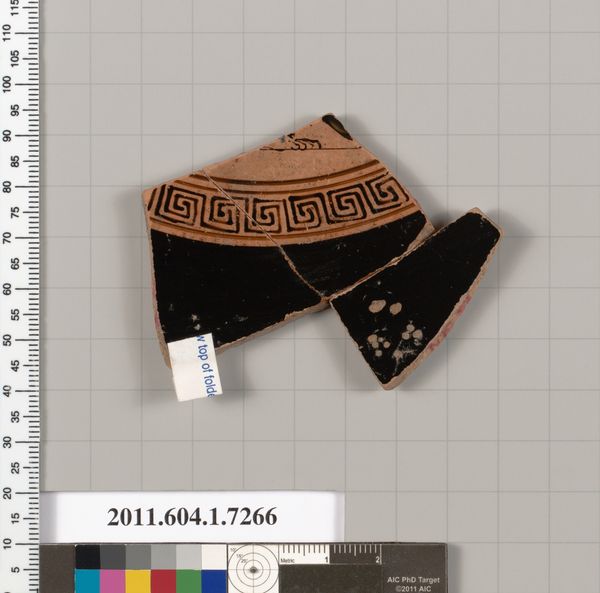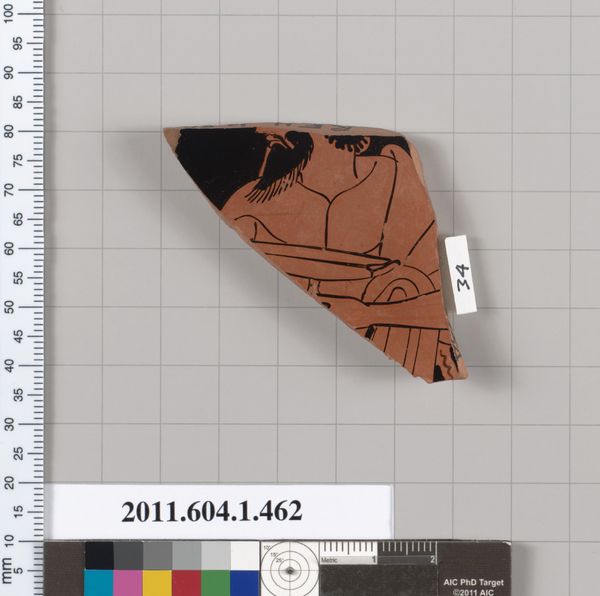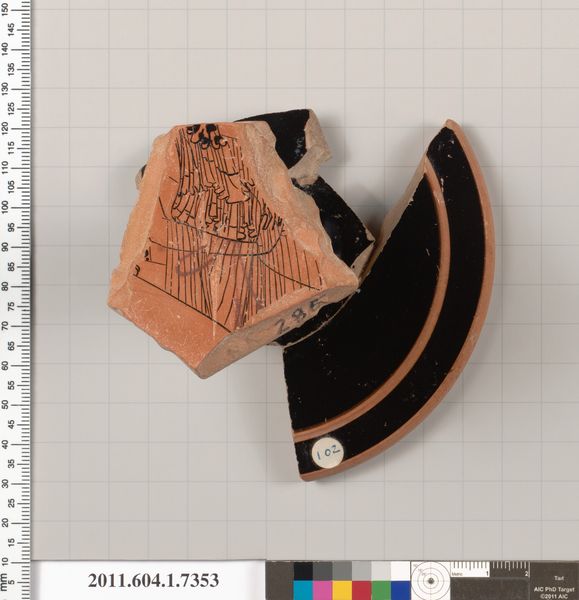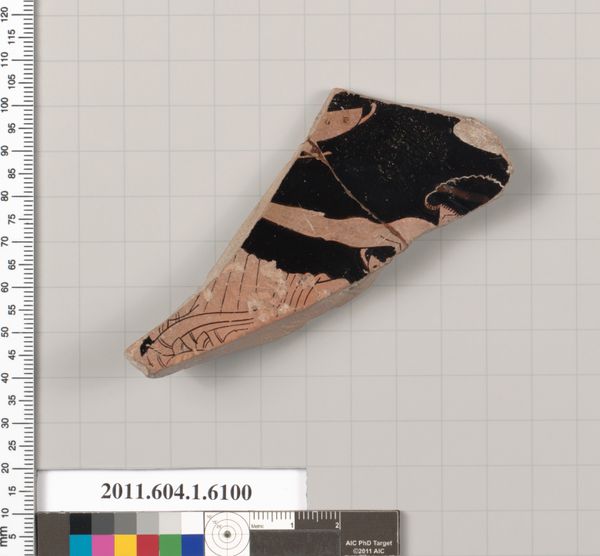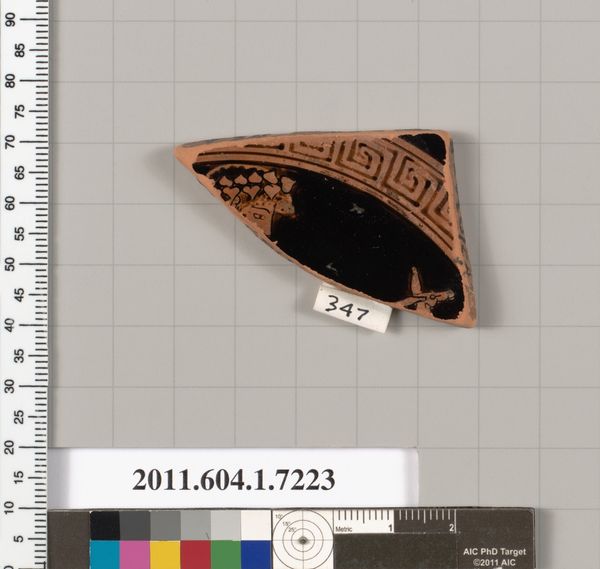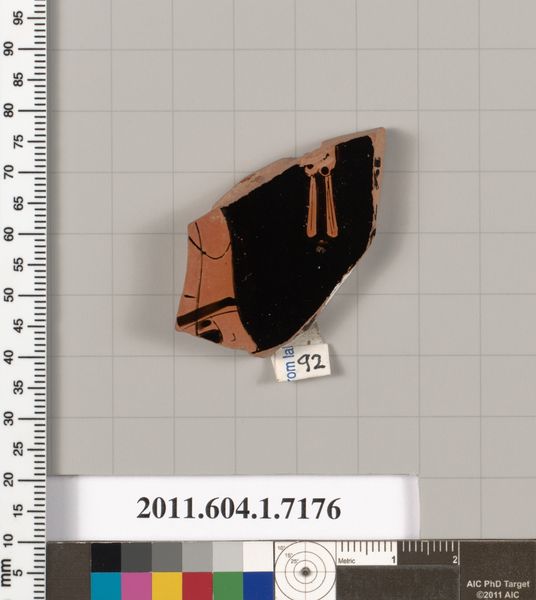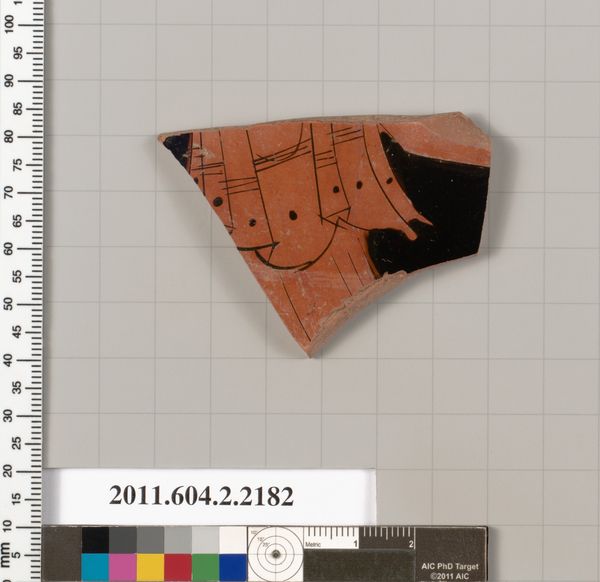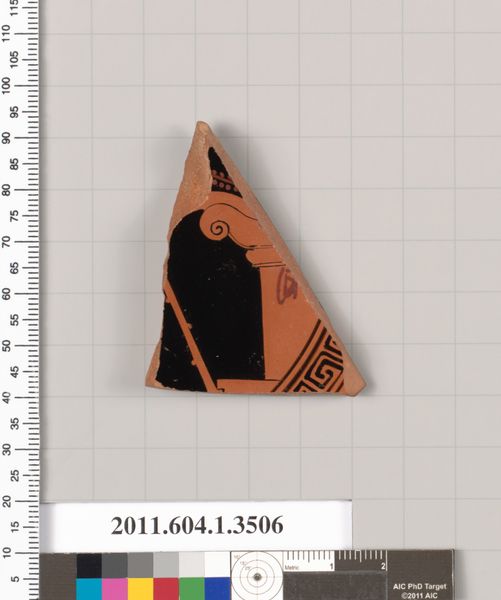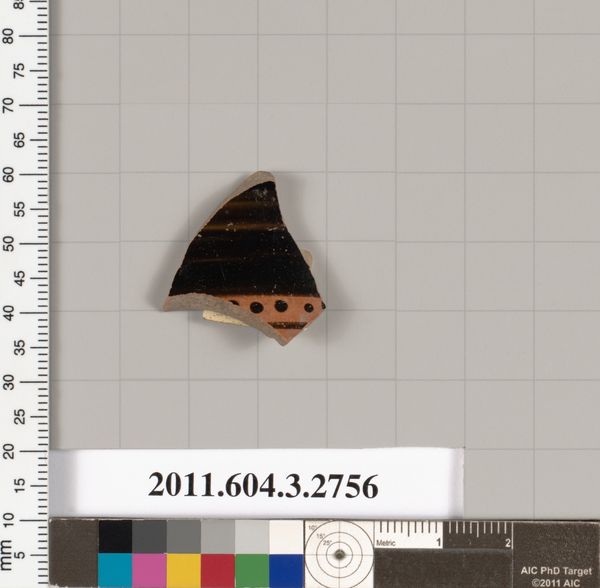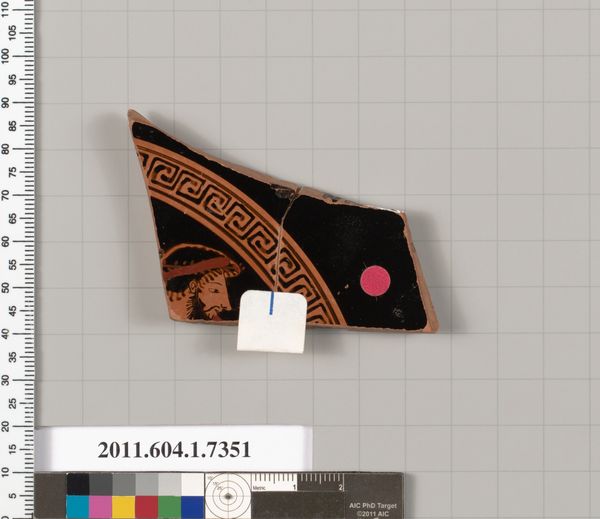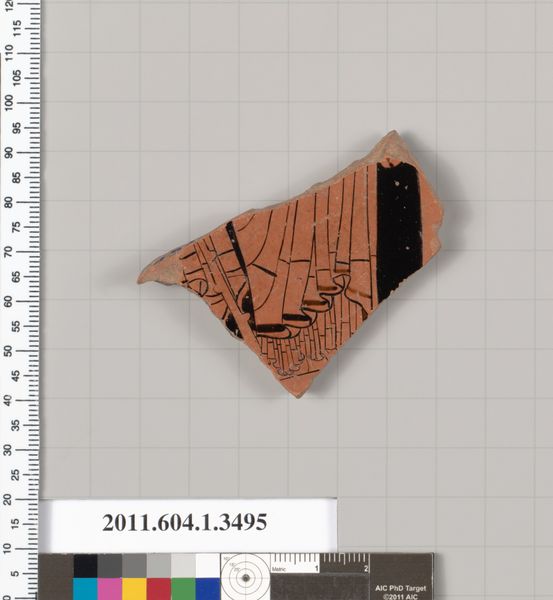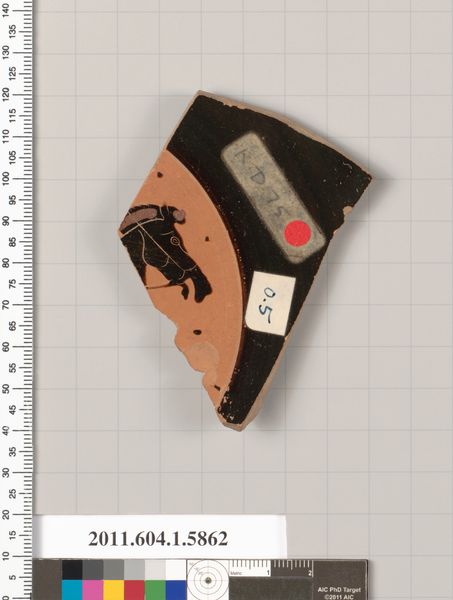
ceramic
#
portrait
#
greek-and-roman-art
#
ceramic
#
vase
#
figuration
#
roman-art
#
ancient-mediterranean
Copyright: Public Domain
Editor: We're looking at a terracotta fragment of a kylix, or drinking cup, dating back to 530 BC. It’s attributed to Makron and currently resides at the Metropolitan Museum of Art. What immediately strikes me is how detailed the figuration is, especially given the small surface area that’s preserved. What do you make of its composition? Curator: Observe how the artist leverages the curvature of the kylix to frame the face. Note the contrast between the polished black slip and the red-figure technique used for the skin. The fragment shows a meticulous rendering of details—the beard's texture, the eye's subtle depth, and the geometric border above, each element demonstrating precise craft and care in design. Editor: So, you're focusing on the elements of design? The shape, colors and how details, however small, draw our attention? Curator: Precisely. The surface embellishments aren’t merely decorative; they work in conjunction with the larger figural scene. Ask yourself: how do these formal elements—the artist's deployment of line, the use of positive and negative space, and the deliberate distribution of mass—create visual harmony and convey meaning within this contained composition? Editor: That’s a very good point. I was immediately drawn to the representation itself, but analyzing how these choices reinforce the piece allows for a different way of analysis. Thank you! Curator: Indeed. Examining the inherent visual structure offers us insights into the very essence of the artist’s vision.
Comments
No comments
Be the first to comment and join the conversation on the ultimate creative platform.

